Simplifying the Estimating Process - PODCAST TRANSCRIPT
March 31, 2024 at 12:00 p.m.Editor's note: The following is the transcript of a live interview with Mitch Heitsch of Westlake Royal Roofing Solutions. You can read the interview below, listen to the full podcast, or watch the video.
Heidi J Ellsworth: Hello, and welcome to a RoofersCoffeeShop Lunch & Learn. My name is Heidi Ellsworth, and today we are here to learn about stone-coated metal estimating. Yes, how to simplify the estimating process. And of course, we had to bring the experts from Unified Steel, my friend, Mitch Heitsch, to come and talk to us about that today. Welcome, Mitch.
Mitch Heitsch: Hey, Heidi, thanks for having me back on.
Heidi J Ellsworth: Ah, love it. It's like we were just doing this before.
Mitch Heitsch: Live at the IBS Show, right?
Heidi J Ellsworth: Live at the IBS Show. So, we are going to have a Lunch & Learn today that is really going to help dive into a lot of the history about stone-coated metal, but also about the estimating, which is so important. So, before we get started, a few housekeeping things for all of you watching. I hope you're watching with your whole office, and that everyone has downloaded their discussion sheet, so that you can make notes as you're going through this Lunch & Learn.
Have a great discussion, and be sure afterwards to go on to RoofersCoffeeShop and take the quiz. If you complete it and do well, you're going to get a certificate of completion and possibly a free lunch on RoofersCoffeeShop. So, enjoy this Lunch & Learn as we learn about simplifying the estimating process. So before we continue, let's start with some introductions. So Mitch, if you could introduce yourself, tell us a little bit about what you do and about your company.
Mitch Heitsch: Yeah, absolutely. So my name is Mitch Heitsch. I'm the regional sales manager for our Unified Steel line for the Southeast region and the Heartland. So that's going to encompass essentially Nebraska and East. I manage a team of about four different reps right now throughout those areas. And we promote the Unified Steel line, which is going to be our stone-coated metal. So that's going to be a product that's offered by Westlake Royal Roofing Solutions. Westlake is going to be a manufacturer of several different roofing products, including Newpoint Concrete Roof Tile, US Tile, which is our clay line, DaVinci, which is going to be our synthetic composite line and then Unified Steel, which is our stone-coated metal.
Heidi J Ellsworth: That is great. Such a huge product offering. I love it. So let's get right into our learning objectives. So today we have three learning objectives. One, what is stone-coated metal roofing? Two, the material list generator estimating tool. And three, the technology of stone-coated metal. So we're going to get started, and we're going to go through those learning objectives. Mitch, let's start with number one. What is stone-coated metal roofing? Can you share some history about the product?
Mitch Heitsch: Yeah, absolutely. So, stone-coated metal roofing was actually developed as a byproduct of World War II. A lot of people don't realize that this product line has been in the United States for decades. So what happened was, back in World War ii, you had the big shiny metal roofs on these Quonset huts. Well, the problem was, is they were big targets for bombers. And so, what they would do is, they would actually coat these metal roofs in a tar substance, and then throw dirt, rock chips, anything that they found around there to help camouflage it. What they found was it was actually extending the life of those metal roofs. So let's rewind back to the 1950s. You had your first modular stone-coated panel was developed in New Zealand as a byproduct of World War II.
And then it came over to the United States. And now we have what we have today, which is our unified steel line, which is the product I'm showing here behind. The thing about the product is that, it was actually developed to look like other roofing products. So you may have driven past one of these in your life and not even known it. Because we have five different profiles that range from everything that looked like a concrete barrel tile, all the way down to a shingle roof. So, if you have an HOA community that may only allow the architectural style of shingles, this is a good opportunity to give your homeowner that metal roof that looks like shingles.
Heidi J Ellsworth: Yeah. Wow. Well, with all the different types of installations that you have, what kind of demand are you seeing from consumers for the product?
Mitch Heitsch: Well, the demand I think in metal in general has gone up. If you've been at some of these trade shows recently, whether that be the IRE or the IBS, I think you've seen definitely an uptick in demand in metal roofs. And what's great about this product line, is that you get all those benefits of a metal roof system, the longevity, the durability, without necessarily having to have it look like a metal roof.
Heidi J Ellsworth: Mm-hmm. True. I mean, and so many different profiles and colors. Let's talk a little bit about the installation. When you're looking at this installation, it's a little bit different.
Mitch Heitsch: It is, yes. So, this product has some versatility in the installation depending on which profile you're using. It can go direct-to-deck, or it can go on a batten installation system. And that's just going to depend on the house or the roof that you're working on. So, if you're maybe wanting to save some time or maybe save some labor, a direct-to-deck method might be a little bit of a quicker install. You're also not relying on as much lumber. And as we kind of saw during the 2021, 2022 era, lumber costs went pretty high. So, that's where the direct-to-deck method came in where, it's a good opportunity to install it without having to use all those 2 x 2 furring strips.
The flip side of that is that on our batten installation method, you do have 2 x 2 furring strips across the whole roof. And one of the biggest benefits of that, is that if you're installing the product on a batten system, you can actually install it from the top of the roof at the ridge down. So in an application type, let's say I'm on a steep pitch, let's say I'm on a 10/12 or a 12/12 roof, my crew can actually start at the ridge and work from there down. Which allows to work off of that ladder system of the battens, and it's a lot safer for the crews to install that way.
Heidi J Ellsworth: Yeah. That's really interesting, and something to think about safety-wise. Okay. So, here's another question. The difference, we already talked about the difference of the installation, but let's talk a little bit about the difference in estimating between stone-coated metal and asphalt.
Mitch Heitsch: Yes. So, that is going to be a really important thing. And a big key of what we're talking about today is going to be the material lists and what you need when you're estimating a job based off of that. Other roofing products might be very simple on the surface in the sense that, if I need to get my shingles, I might get them from over here, my underlayment I might get over here, and then my nails and things I might get from a different source. One of the big benefits of Westlake Royal Roofing Solutions is that we have pretty much a one-stop-shop.
All of the parts and pieces, that's going to be covered in our components line, our roof system components, that's part of the Westlake Royal Roofing components. So, you can essentially get everything from the underlayment, to the screws that you need, all in one place. Because of that, it's going to generate a little bit more of a material list that you're going to want to need. So, when you're talking about putting together this material list, having an accurate system and something that doesn't take a lot of time, is going to be key to promoting this product.
Heidi J Ellsworth: Yeah. And you have really done an amazing job, you and the team at Westlake and Unified Steel, of really bringing all this together. So, let's get into our second learning objective on the material list generator estimating tool. So Mitch, how does it work?
Mitch Heitsch: Okay. Well, I could tell you, but I think it might be easier if I show you.
Heidi J Ellsworth: Let's do it.
Mitch Heitsch: So, I'm going to go ahead and pull up this screen here, which is going to show you our website. So this website is going to be a tool that's offered through our westlakeroyalroofing.com, under our resource tab. If you hover over resources, you'll be able to find the steel material list generator. What's nice about this tool is that, this gives you the ability to not only create your material list, but you can actually save all of your projects in this setting. So if you need to reference back to that, you'd want to create a login and a registration form. That'll allow you to actually log in, that when you fill out these project details here, it allows you to go back in later to pull those.
Whether it be that maybe something on the roof measurements change, they added an addition or the profile changed, something along those lines. This gives you the ability to go in here and change all of that. When you get into the measurements here, this is going to be your standard measurements that are pulled from your everyday EagleView. So what I'm going to do here is just go in and plug in, like I was working on a standard roof here, and just throw in the measurements really quick. You can see that if I have a roof report, I'm actually looking at a roof report as I'm doing this, so...
Heidi J Ellsworth: I love it.
Mitch Heitsch: So, you can see how quickly you can input those measurements. Now I've got all my measurements here, so I'm going to scroll down. If I wanted to have a double check opportunity, I can actually input where my measurement source came from. Whether that was from a roof report, whether that was from my sales rep up on the roof with a measuring tape, I can input all those information right there. Now I want to get into my installation method. I mentioned before that this product can get installed as a direct-to-deck method, or as a batten installation method.
Actually, within my direct-to-deck method, I have two different methods. I have what we call the cut-and-tuck, which is going to utilize some more return metals and things like that. Or I have my cut-and-bend method. The cut-and-bend method is going to utilize more wood furring strips along certain areas, to allow you to bend the panel and use that panel as a counter flashing detail. So, for the sake of conversation, we're just going to stick with a direct-to-deck cut-and-bend method and I'm down here in the South, I'm in Florida, so we're going to go with one of our most popular, which is going to be my Barrel Vault. That's actually the one I have shown behind me here.
Heidi J Ellsworth: I love it. Okay.
Mitch Heitsch: Now, as I get into selecting my installation method, this is going to pull up all my different color offerings that we have. If you're dealing with a homeowner that maybe doesn't have that color offering selected yet, no worries, you can select a no-color offering. What's important to note about this is that, depending on the color that you select, it's going to pull those parts that you're going to need, the part numbers, to place an order. So if you do have a no-color offering, it might be important to create a login, so that you can go back and reference that later to pull in the correct color, so you get the correct part codes to place an order. So for right now, we're just going to assume we don't have a color. So, we're selecting the no-color offering and I'm going to generate my material list.
This is going to pull up your next screen with all your parts and pieces on it. So, if I entered it in my project details, that's going to fall into this area here. As I scroll down, you see the summary of all those measurements that I put in there. What I also have the ability to do here is override my waste factor. We added this, because we as a company have to assume the worst. We have to assume that materials are going to get wasted, they're going to get thrown off the roof. And so, what I want to do is go in here and let's say, "Hey, my crew knows what they're doing, so let's adjust this down to a 15% waste factor." And you see how it changed my total roof squares, down to 52 squares based on that 45 with a 15% waste. Now as I scroll-
Heidi J Ellsworth: That's great.
Mitch Heitsch: Yep, absolutely. So now as I scroll down, you'll see that I start getting into some of these parts and pieces. So, for the sake of conversation and for the sake of this presentation, let's go ahead and just kind of talk about what some of these parts and pieces do. Obviously you have your field tile. So this is going to pull your Barrel Vault field tile at 52 squares, which is going to be 1248 pieces. Something to keep in mind here, all of our parts and pieces are going to be listed here on the left, that'll show you that there's 24 pieces per square and 360 pieces on a pallet. This is going to give you what full pallet quantities or full package quantities are going to come out to, to help with the ordering process. Your trim caps, that's going to default to a mission cap that'll be used with your Barrel Vault.
So this would be your standard cap pieces along your hips and ridges and rakes. Your end discs here are going to be areas where your hip and your rake might terminate. So, in a concrete world that would typically be a mortar ball. In our stone-coated metal world, we're going to use these end discs to finish off those details. Now, I mentioned before that we're doing a direct-to-deck method, so why am I getting battens on a direct-to-deck method? This is going to calculate the bundles based on these measurements right here that show your ridges, hips and rakes. I mentioned before that this is called our bend-up method. So on my ridges, hips and rakes, I'm going to install these 2 x 2s, so that I can bend the panel up to use them as a counter flashing. Now I get into some optional details.
This is where understanding the method and probably reaching out to your territory manager may not be a bad idea. Because now I'm going to get into, do I want to do ridge venting, which we do offer or do I want to do a stone-coated off-ridge vent? We do offer all of our off-ridge vents in stone-coated, so this is a great option to be able to have. And let's say I need four of those on the roof, and I'm going to click that optional detail. Now you notice when I do that, it zeros out my ridge venting because I don't need both. And it added this Emseal, which is going to be this expandable foam that you're going to put on the back end of that. So it's a really intuitive process and software that is... And I wish I could take credit for it. You thanked me earlier for it, but this is people way smarter than I that have helped develop this program.
Heidi J Ellsworth: This is really impressive, very impressive.
Mitch Heitsch: Continuing down the line, trim cap rake metal is going to be a metal that we offer that's going to be a drip edge for your rake. Now, if you can see this diagram here, there's a little extra notch in there. This would be for utilizing those mission caps, those trim cap pieces along your rake. And that little extra notch just helps you a good guideline to go off of. You could substitute this out with just a standard 2 x 2 drip edge if code requires you to have drip edge along the rake. Some municipalities don't require it, which is why we have this as an optional detail. But let's say I wanted it, I would click that optional, and you see it populated the quantity there. Your bird stop in Barrel Vault is going to be your drip edge and your eave closure all built into one.
You see here that it's populating that. Top row metal, this is going to be broken out into two different areas. So, I did have some headwall, and so it's going to calculate one piece for the headwall. And then I'm going to want to use this along my ridge, which is going to calculate that out for my ridge. The foam closure strip underneath that, that's going to go underneath that top row to help encapsulate that area. My Z Bar, again, this is where the different installation methods might have different parts and pieces that you use. The Z Bar is going to be used as a counter flashing metal. So, as I mentioned where you're bending the panel up to use it as a counter flashing, if I was along my headwall and my sidewall, this Z Bar would go over top of that as kind of the counter flashing.
Then I get into valley metals. A two-piece valley metal is typically going to be used in our cut-and-tuck method, so this is going to be defaulted as an optional. The default is going to be my valley 5V, and it's going to give me that pricing. If I wanted to change this over to the two-piece valley metal, when I click on that, see how it zeros out the Valley 5V. The valley center cover, that's going to be a piece that is an optional detail if you're doing the bend-up method. Because this would just be something you would stitch screw into the valley to help hide any cuts and bends that may not look too good. Flat sheets again is an optional detail. These are just going to be your standard stone-coated flat stock sheets that come in an 18 inch by 54 inch piece.
Again, just like the EZ Vents, we do offer stone-coated pipe vents as well. These are going to go hand in hand with each other. Your pipe jack is going to be a foreign, so that's going to go from a one inch pipe to a four inch pipe. And the pipe jack is essentially your waterproofing. The pipe sleeve is only going to come in a four inch diameter, and it's going to go over top of the PVC to help just encapsulate everything in a nice stone-coated finish. And again, these are going to be optional, but know that these two kind of go together. Touch-up kits, we do include all the touch-up kits that go with our orders, so this is going to be a small bottle of our acrylic polymer adhesive with a little sandwich bag of the stone chips. Helps just kind of dress up any dings and dents that might happen.
We do also sell these in bulk quantities, so you can buy a 25-pound bulk bucket or a 12 pack of that adhesive. Sealant tubes, again, same thing. And then we get into our panel screws. If you're doing this for the first time, I would recommend reaching out to your TM, but if you don't, then we have some notes here. You'll notice here that there's this HVHZ note here. This is going to talk about when you're in a high wind zone area, you might need to increase that quantity to 16 screws per panel. I'm going to default back to our Florida evaluation report that's going to talk about our wind uplift, and what systems to use where. Understand and know that your default for this is going to be system one across the entire roof. So, in certain areas where you might have to hit 170 to 180 miles per hour or above, you might need to change the system and you might need to manually override your screw count based off of that.
All the other screws are going to be calculated in stitch screws and then the valley screws. The ring shank nails are going to be used to install your battens. Again, we're using battens even though it's direct-to-deck on the hips and the ridges, so it's going to calculate a box for that. As I mentioned before, we have our roof system components available. So here's where we're going to list out a lot of these different options for you. SwiftGuard underlayment, it's a great synthetic self-gasketing underlayment that we offer. Sol-R-Skin BLUE is going to be our class A energy efficient underlayment. And then we have our metal seal, which is going to be our high temp peel-and-stick or ice and water shield as that's been known to be called. Down in Florida we call it peel-and-stick.
You'll notice that peel-and-stick or metal seal is listed twice here. The first one, you'll notice this note that says, for use on eaves and valleys per code. That would be considered more of an ice and water shield. If you get down into some of the Southern states that might require a full peel-and-stick over the whole roof, you have that option. So as soon as I click that, it's going to give me how many rolls I need for the job, and I can override that. All of these quantities you can override to whatever you want, but we're going to give our recommendation on everything. Wakaflex, great, another tool from our RSC department, that's going to be a flexible flashing detail. You use that in any kind of difficult transition points. And then I get into my stainless steel fasteners. So, I didn't mention this earlier, but this product performs very well in coastal applications.
The main difference that we have, is if the project is located within one mile of non-fresh water, we want to make sure we're using stainless steel fasteners. So again, as with anything else, when I click that optional detail, it's going to give me those quantities. And then up here at the top where I had my panel screws, it's going to zero those out, so I'm not double buying panel screws. And then finally, my solar roof mounts. This is going to be our solar hooks that we offer. If you are installing solar, solar works very, very well with our product. These solar hooks can bend up and over that channel and give you a nice up and down bracket to hook your railing system onto, and we allow you to click this as an optional detail and fill out how many you need, so that you have the part number to place that order.
Heidi J Ellsworth: This is so comprehensive. And I love the fact, like you said, intuitive in that, if you click one thing like the stainless steel fasteners, it's going to fix it up above if you had other fasteners. I mean, just really and everything that you need. So for estimators, this really is like zoom. It makes it fast.
Mitch Heitsch: It really does. It has been a labor of love. We have been working on this project for years. There have been a lot of people involved, and we are so happy that we are getting this off the ground, and that we have this living live. It is a great tool. We really do think it's going to change the game when it comes to the estimating process and the sales process. I have been trying to scream this from the mountaintops as much as we can, because we want people involved in this. Because the number one thing that we typically get out in the field is that, this is a difficult product to deal with. And part of that difficulty of why people think that is because yes, on paper, as you're seeing, there are a lot of parts and pieces, there's a lot of option, this option, that. As you get into it, you're going to find it's a lot more simple than what it looks like on paper. And the more you do it, the more you understand it, the better the roof system is going to be.
The cool thing about this tool is, after we've gone in and filled out all of our different parts and pieces, overridden what we've wanted to override, I have two options here. I can either export this list as a PDF or as a CSV file. If I export it as a PDF file, I'm going to let that download and I'm going to pull that up real quick. It's going to come out looking like this. So you'll see here that this gives you the ability now to have all of your parts and pieces listed out, with a nice little diagram picture there with your part number. Again, I mentioned before that that part number will change per color. So if you don't have a color, it's going to give you that multiple X pattern. So you just want to make sure that you're updating this. If you send this over to your distributor and say, "I want to buy this product," they're going to be like, "Well, I can't," because they don't have part numbers. No, they will. They're just-
Heidi J Ellsworth: We need a color.
Mitch Heitsch: ... It'll add more work to them. But then all your quantities are listed out here, and everything that we just discussed is all going to be on a nice simple PDF format.
Heidi J Ellsworth: That is great. I mean, the distributors have to love this.
Mitch Heitsch: The PDF version is really popular, especially when it comes to our contractor base. Because the contractors are able to go in, in their estimating department, do all these measurements themselves and then export it as a PDF, which they can send to their distribution partner. If you're on the distribution side, what's really nice, coming from experience, I don't think most of my distributors really care a whole lot about all of these pretty pictures that we add to it. If I'm on the distribution level, what do I care about? I want to know line item, what do I need? How much does it cost and what's my part number?
Heidi J Ellsworth: Right.
Mitch Heitsch: Right? So, what I'm able to do is actually export this as a CSV file, which gives me the ability now to have a very simple... Again, if I had my project information here, that would be listed up here at the top. But essentially what I have now is going to be this nice line item, part number and quantity needed. If I have a template already built out, what I'm able to do is go in, drop this into there and say, "Okay, I know what all my prices are," right?
Heidi J Ellsworth: Yeah.
Mitch Heitsch: So, it's a really simple CSV file that they're able to use on that as well.
Heidi J Ellsworth: That's great, that's great. And when you think about all the online ordering that's going on, this can really make a huge difference for the contractors with speed in ordering.
Mitch Heitsch: 100%, 100%. And one thing I really want to point out too as well is going to be at the very bottom of our website, you're going to see this little territory managers link. I'm going to give a plug for all of our team, because our territory managers in the field are some of the best in the business. We cover a very vast region, we're across the entire US. One nice thing is that, if you are dealing with your territory manager and you want them to try and help you with a material list, we will be able to come in and give you something that looks more like this. So this is typically what you would see if you reach out to one of our territory managers and say, "I need a quote for this." You'll see that there's that line item type of, it's not going to have the pictures and everything like that in there.
But what you're going to get is all of the parts and pieces that you need with some of these notes next to it. How much waste factor did I use? What kind of ventilation did I use? Was this a coastal application and I bid using stainless steel screws? And then you have your optional details. So at the end of the day, we're here to help our customers as much as we want. We're not trying to create this tool to take the burden off of us. We want to help, we want to explain things. But at the end of the day, you may not want to wait on us to be able to get you this list back. You want to just do it yourself, you want to increase your speed on that. And this gives you the ability to do that as well.
Heidi J Ellsworth: That's phenomenal, that is phenomenal. Well, let's go to our third learning objective then. Because with this, I want to talk about technologies. Because you've really brought the technology together, estimating wise, to be able to help contractors really use this product in such a way that's so fast. So, what technologies are you seeing are having the biggest impact in the industry right now? And how is that relating into really what you heard from the industry and created?
Mitch Heitsch: Yeah. I mean, I think when I started in the industry, a lot of people that I learned from were very archaic when it came to measurements. They would put the ladder up there with the tape measure, and you had to... This is actually where geometry, when you were a kid and you're thinking, "When am I ever going to use this stuff," would actually come into play. I didn't think I'd ever have to use that again. But turns out as a roofer, you do.
Heidi J Ellsworth: You do.
Mitch Heitsch: That's a very, I don't want to say it this way, but it is kind of an old school way of thinking. Now we have so much more technology that's out there. Whether it be from satellites, whether it be from drone capturing. All of these different tools that are out there to help speed up the process when it comes to doing that. Because I have been on those roofs, I have seen it where, it will take you half of a day to get the measurements that you need. With some of these other tools that are out there now, within minutes, you can have the information that you need. Now we're coupling that with what we're able to offer on the MLG side, that you could fly a drone, have the measurements and have a bid to your customer all within a couple of hours.
Heidi J Ellsworth: It has changed the industry. I mean, I was involved with it when it first came out. And seeing that, and now seeing how it's integrated into technology, like the material list generator really, in order to get such accurate estimates to really help the contractors. And even when I'm looking at what you're doing with waste factor, really being able to start now talking about that and saving money for the contractor. When you really look at the future of estimating, you guys have already, you're bringing this tool, you really make it easy. What are some of the things that you're seeing going forward? What are other things that you see coming down the pike?
Mitch Heitsch: Well, I think that it's good and bad. But I think that you have a lot more estimators that are being hired and being brought on to do just that, they are an estimator. And for the most part, an estimator could do that entire job without ever having to leave their office. All the technology, all the tools that are out there are phenomenal. And you can bring in somebody that understands computer software, they understand how this stuff works and they can get really good at that. I still don't think that you can replace in-person hands-on experience. So, if you are doing this, get them outside and show them a roof and show them how these go together, because there are things that they're going to need to know from that standpoint. But I do think that the future of estimating is very digital. It's very transparent. We are in an age where everything is at our fingertips. I don't know why roofing estimating shouldn't be the same thing.
Heidi J Ellsworth: Exactly.
Mitch Heitsch: I can pull up my phone and order something on Amazon and have it here with... Oh, I probably shouldn't give a plug for Amazon. Let me rephrase that. I can pull up my phone, pull up an app, and have something at my doorstep within hours. There's no reason why I shouldn't be able to show up to a homeowner or a customer's door, and have a roofing bid to them within hours. It should not take multiple days or weeks in some kind of cases.
Heidi J Ellsworth: When we're really looking at the way it was, the way it is, and the way it's going to be, the customer demand feels like that is really going to drive it. I mean, the customers want speed. They want to get their estimate. And so, contractors who are doing it the old way and not using these tools, whether it's aerial measurements or the material list generator, drones, they're going to lose customers.
Mitch Heitsch: I hate to say it that way. Because I do know a lot of great roofers that are out there. But sometimes that day or two lag in getting a bid back to somebody can mean the difference between winning and losing the job. We're in a very quick era. There's a lot of high pressure sales that are going on out there. Where, sometimes in order to close that deal, people want to know how much it's going to cost, and they want to know right there when you're sitting in that living room with them. And sometimes if you take the measurements and, "Hey, let me get back to you in a day or two."
Now it's been 48 hours, and you told them you'd get back to them, you might still be working on it or you got sidetracked. You lose the confidence. And so you might lose that sale based on the longevity of how long it takes you to get back to that bid. This is an opportunity of what gives you that at your fingertips to be able to build it out yourself, to speed up that process. And at the end of the day, time is money.
Heidi J Ellsworth: Yeah. Time is money. That is it. And the accuracy to know that you're going to be profitable at the end of the day. Okay. Let's get into just a few details. First, how much does it cost for contractors to start using the MLG material as generator in their process?
Mitch Heitsch: Well, that's my favorite part about this. This is a free service that's offered through our website. You do have the option to log in, create a link to register into that, which is also a free service. We're going to help you store that information to reference back at a different time. It also allows us the ability that if you wanted to reach out to us, we can help jump in and help you any way that you need. But again, ultimately these are free services offered by us. We are here to help grow the business. This is a product we believe in, and offering tools like this for free allows us to really help spread the word about it.
Heidi J Ellsworth: And how do they get started?
Mitch Heitsch: I showed you how to find your local territory manager. That is a great place to start. I would highly recommend reaching out to your local territory manager, getting in contact with them. Not only do we offer training on how to use this tool, but we will offer so much more than that. We will come in, we will help train your salespeople on the features and benefits of this. We will help train your installation crews on how to convert and install this product line. But the biggest thing is, you got to reach out. So Westlakeroyalroofing.com, find your territory manager or just click contact us, and that'll direct to the inside sales team to help direct back to your territory managers.
Heidi J Ellsworth: And I can tell you, I've worked with a number of your regional managers. They are amazing. And if this is something you want to add to your company's offerings, this isn't something you have to fill out a bunch of forms, do a bunch of work. You just have to reach out and build a relationship, and then start using the tools that can make it easy for your team to really start offering this premium roofing product. So Mitch, thank you so much.
Mitch Heitsch: Absolutely, absolutely. Again, I can't thank you enough for having me on. I love coming on here and talking about this product. And if there's anything I can ever do to help, please reach out. We're here to help in any way we can.
Heidi J Ellsworth: And I'm going to say the exact same thing. If you want to get ahold of Mitch, go check out those regional managers. Or of course, let us know at RoofersCoffeeShop and we'll connect you. So, for all of you out there watching this Lunch & Learn, thank you so much. Your learning objectives of what is stone-coated metal roofing, the MLG estimating tool, material list generator and the technologies around stone-coated metal. Hey, we covered it all today. Good luck with the discussion sheet and the quiz, and we will be seeing you next time on RoofersCoffeeShop Lunch & Learn.

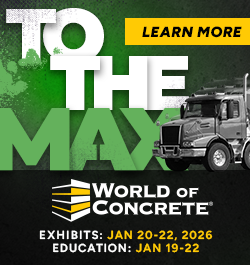











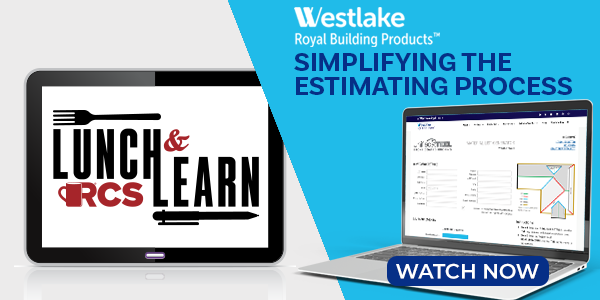

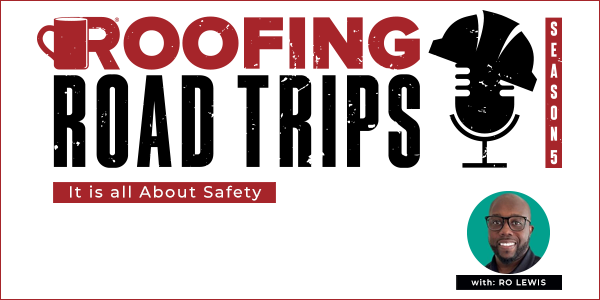
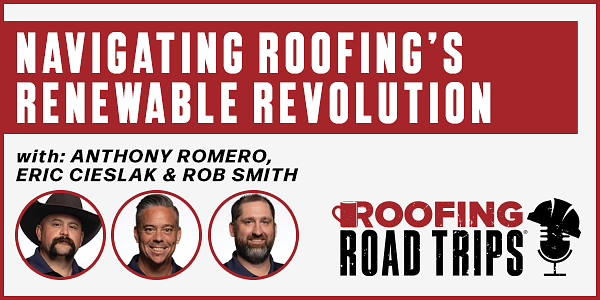



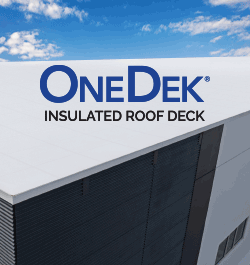

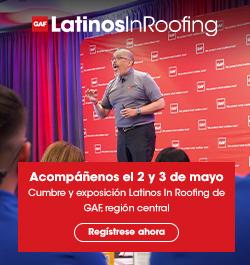

Comments
Leave a Reply
Have an account? Login to leave a comment!
Sign In